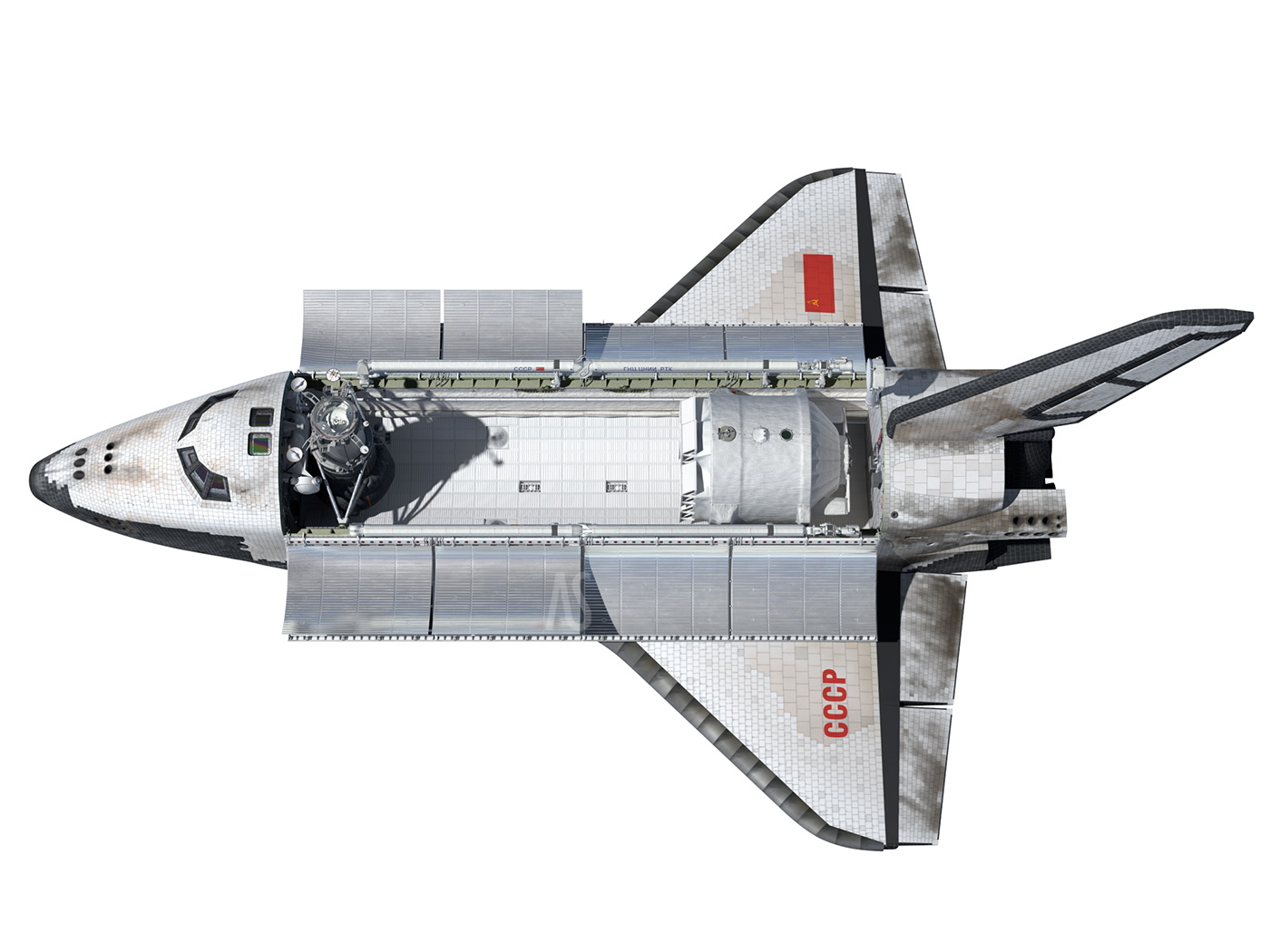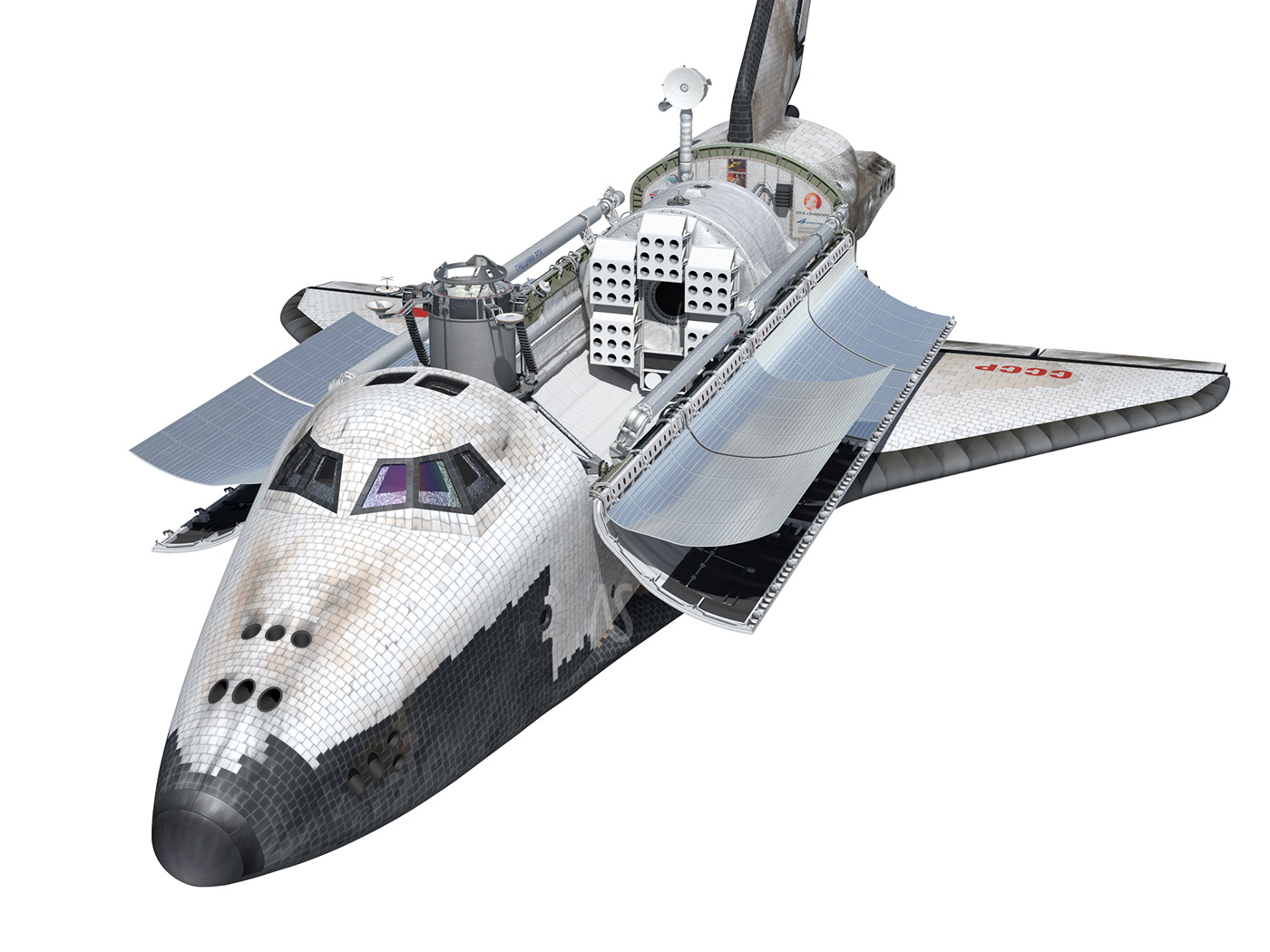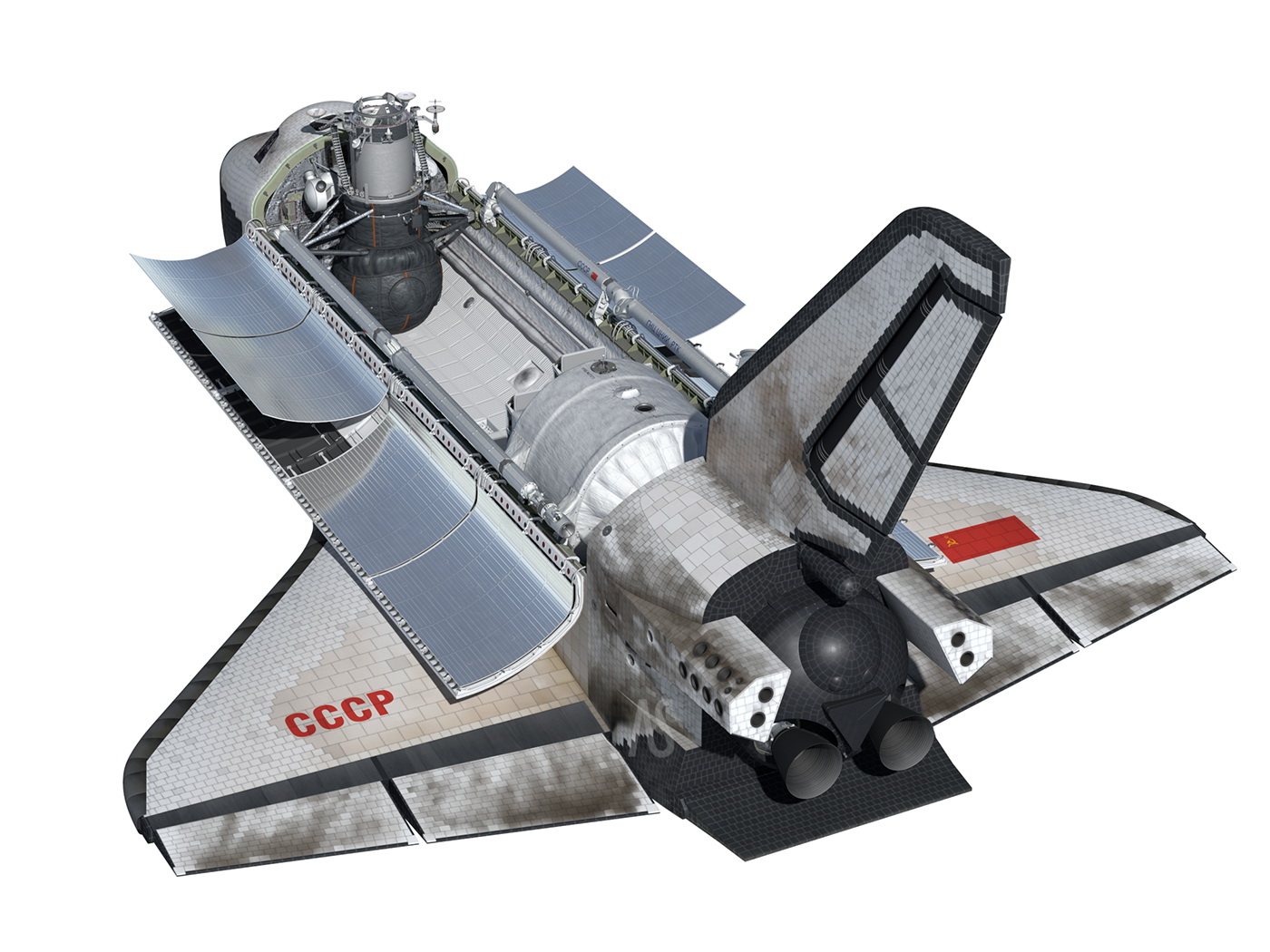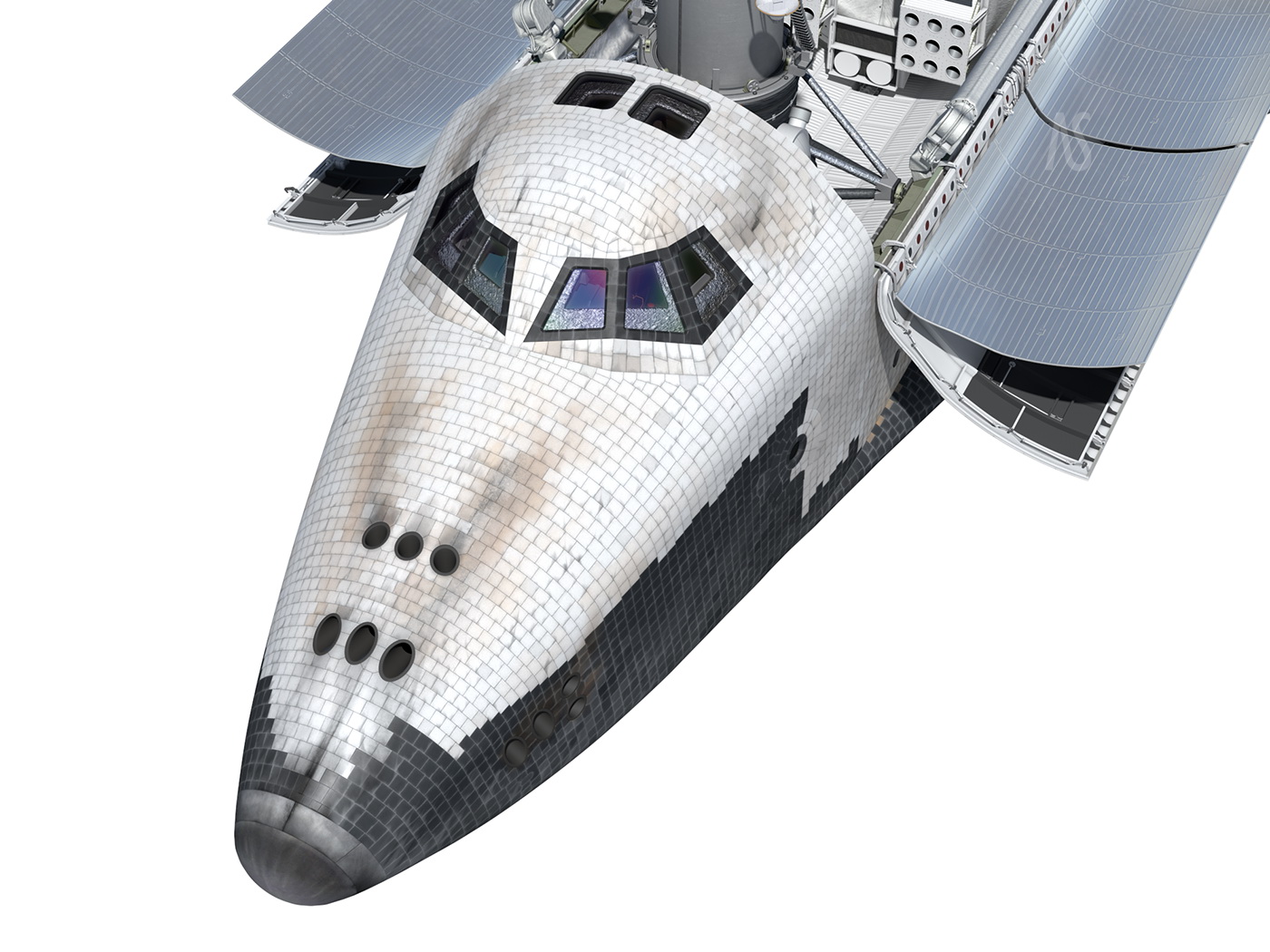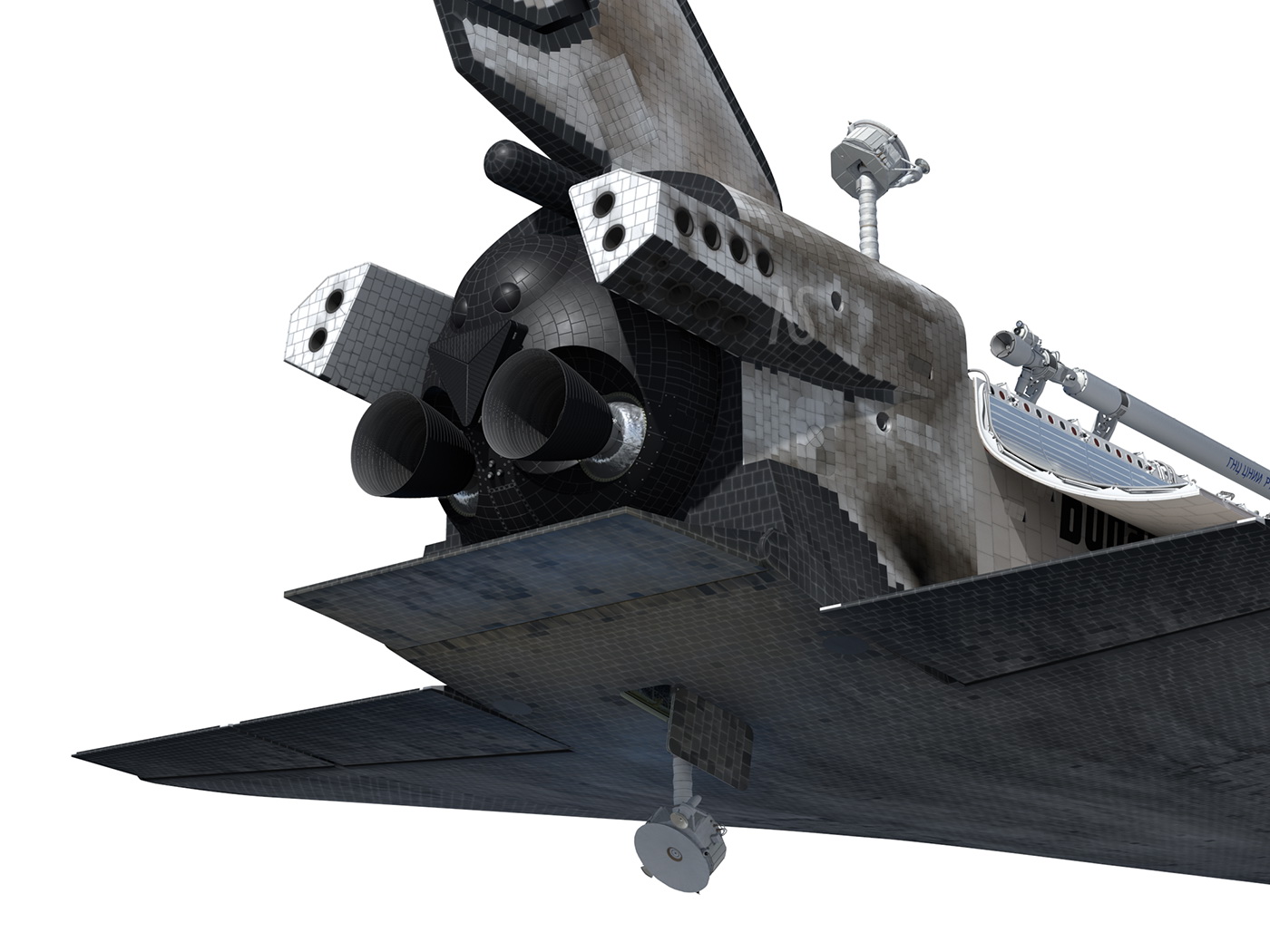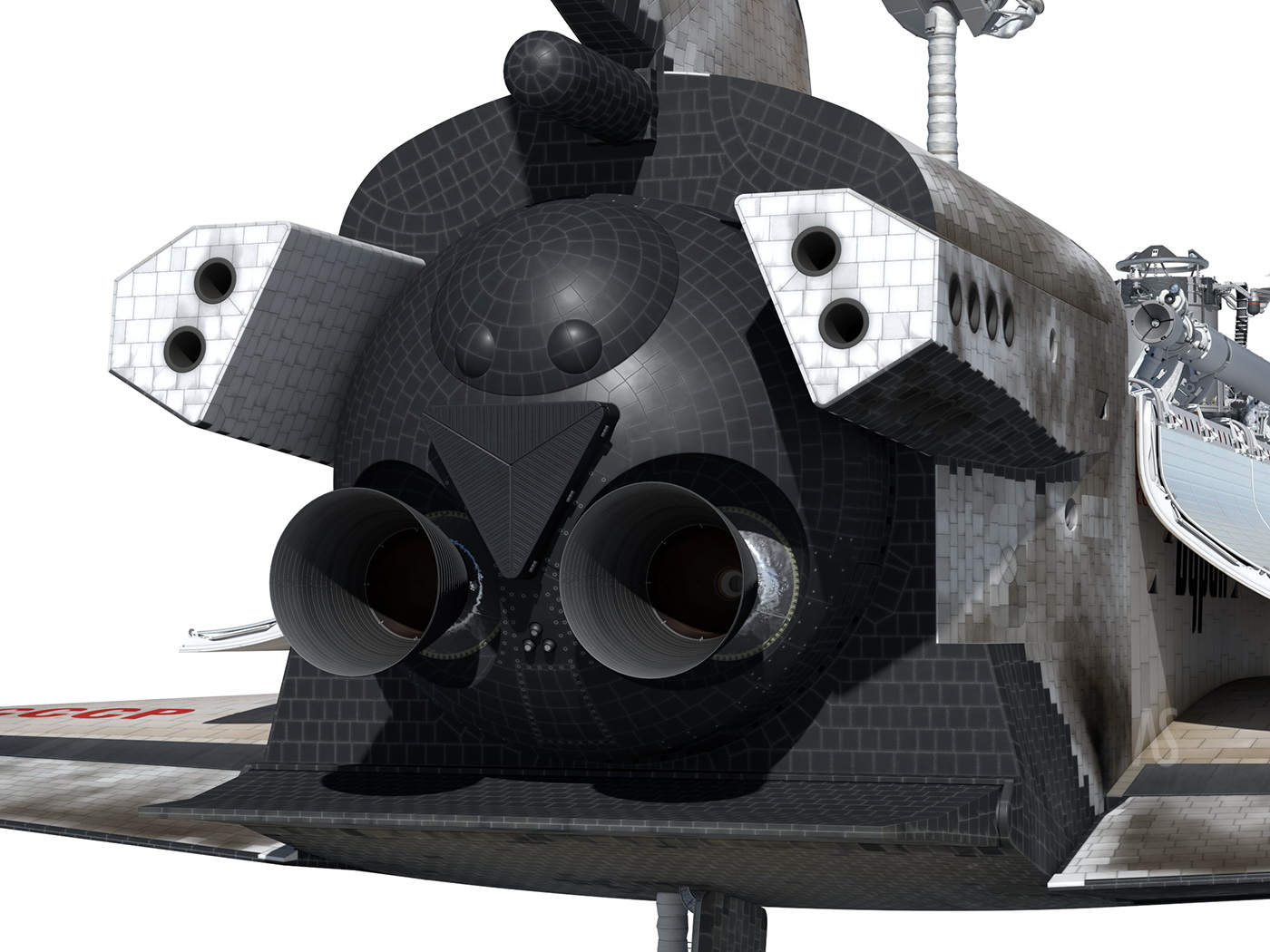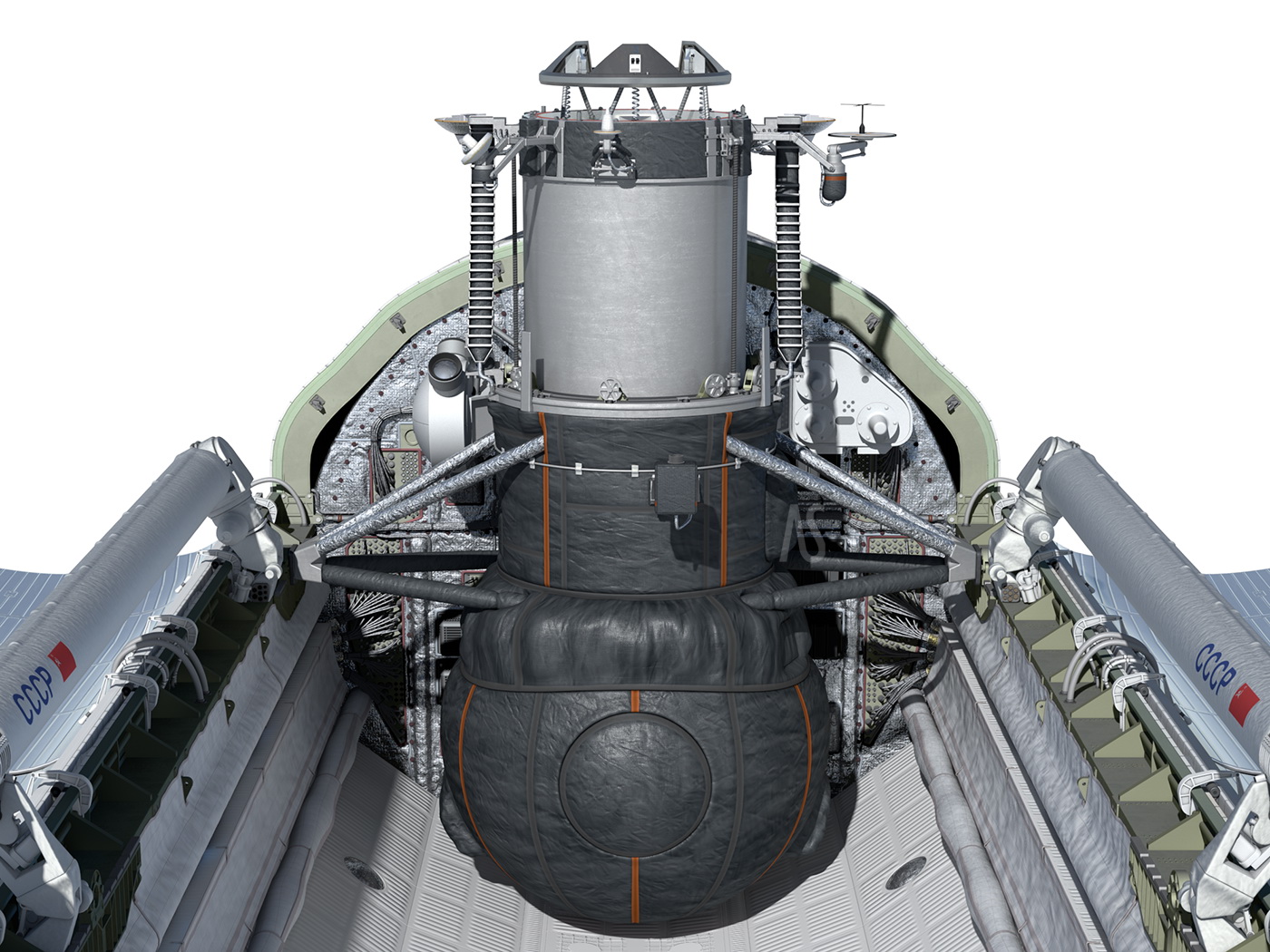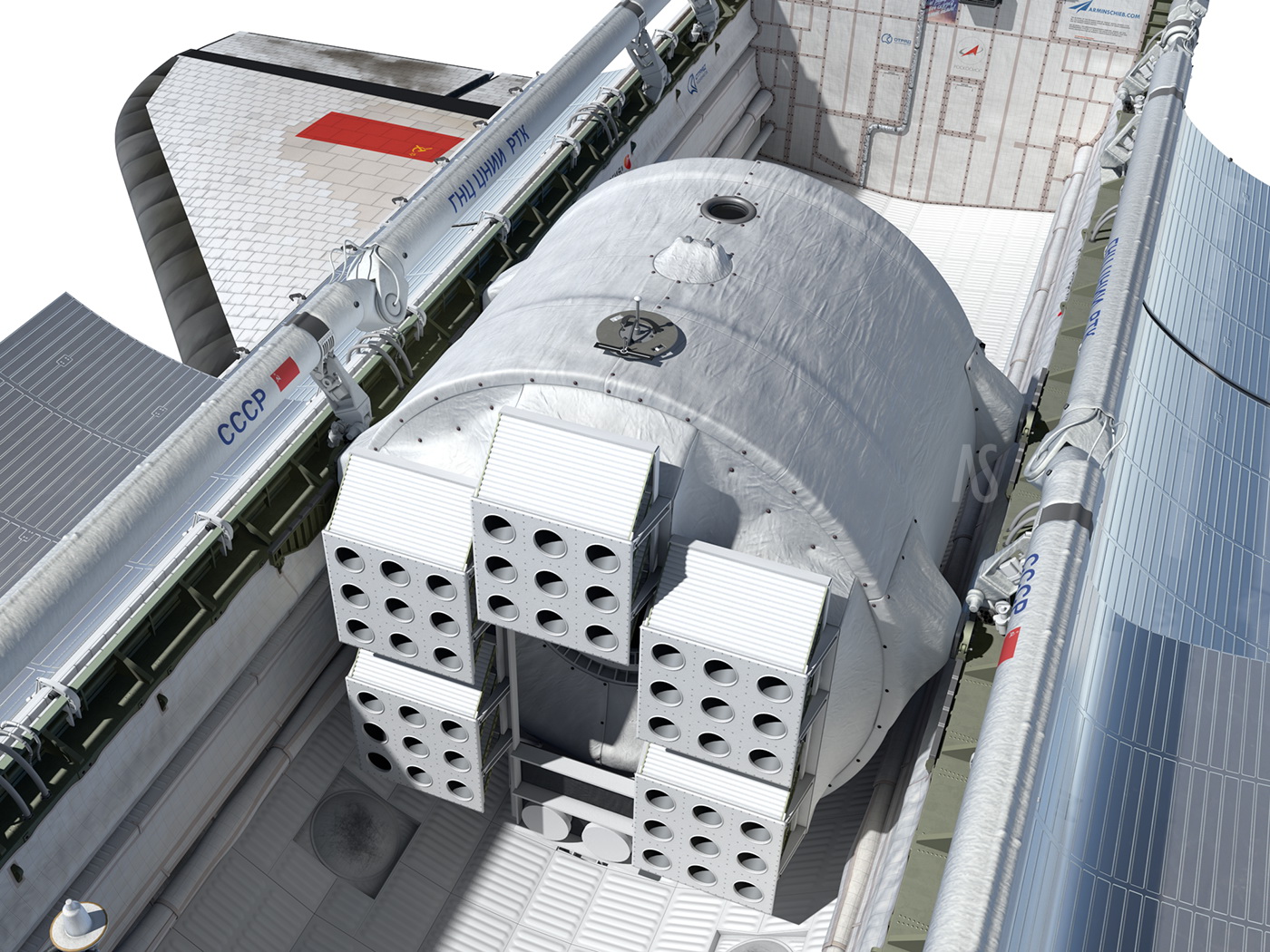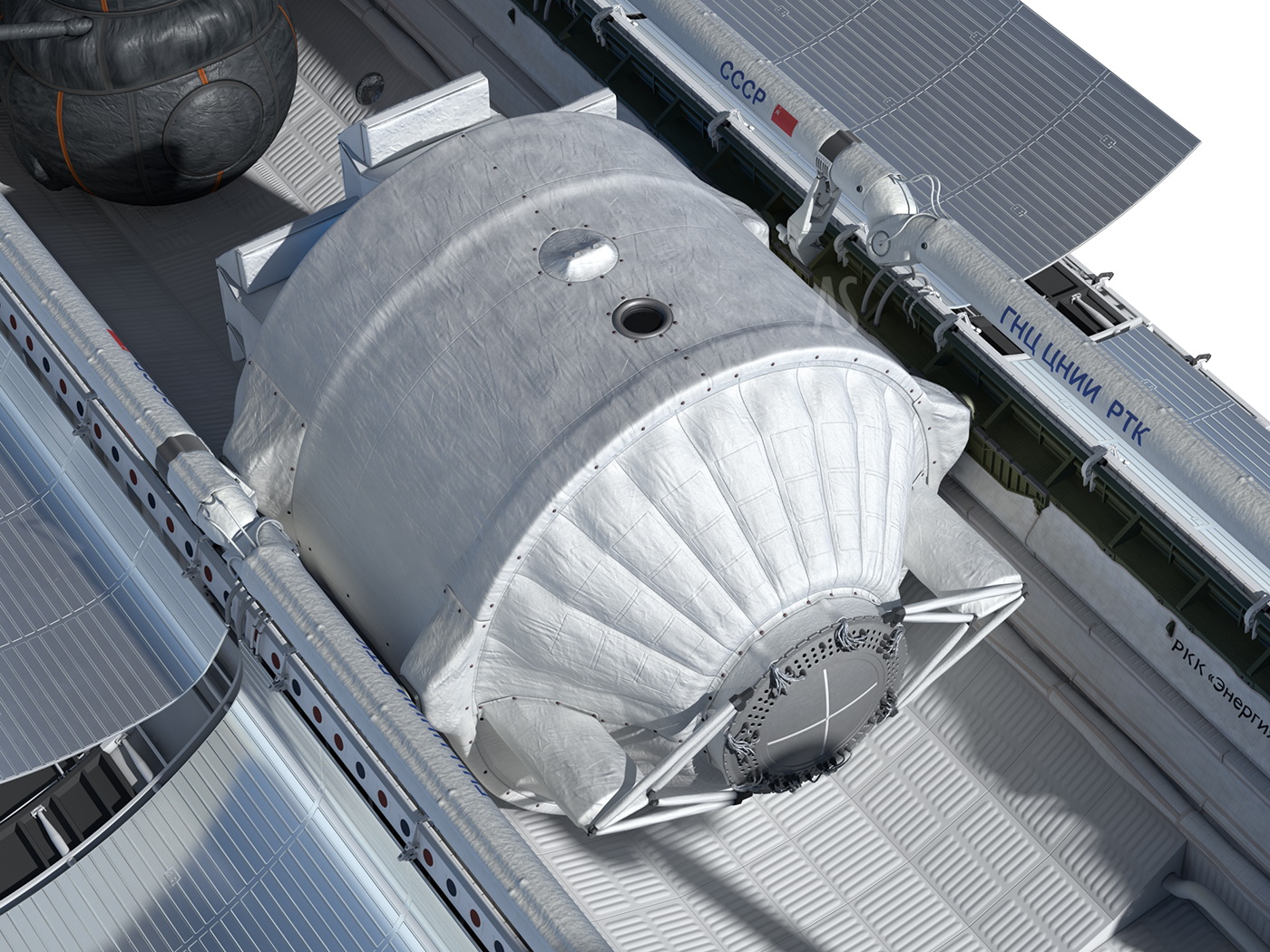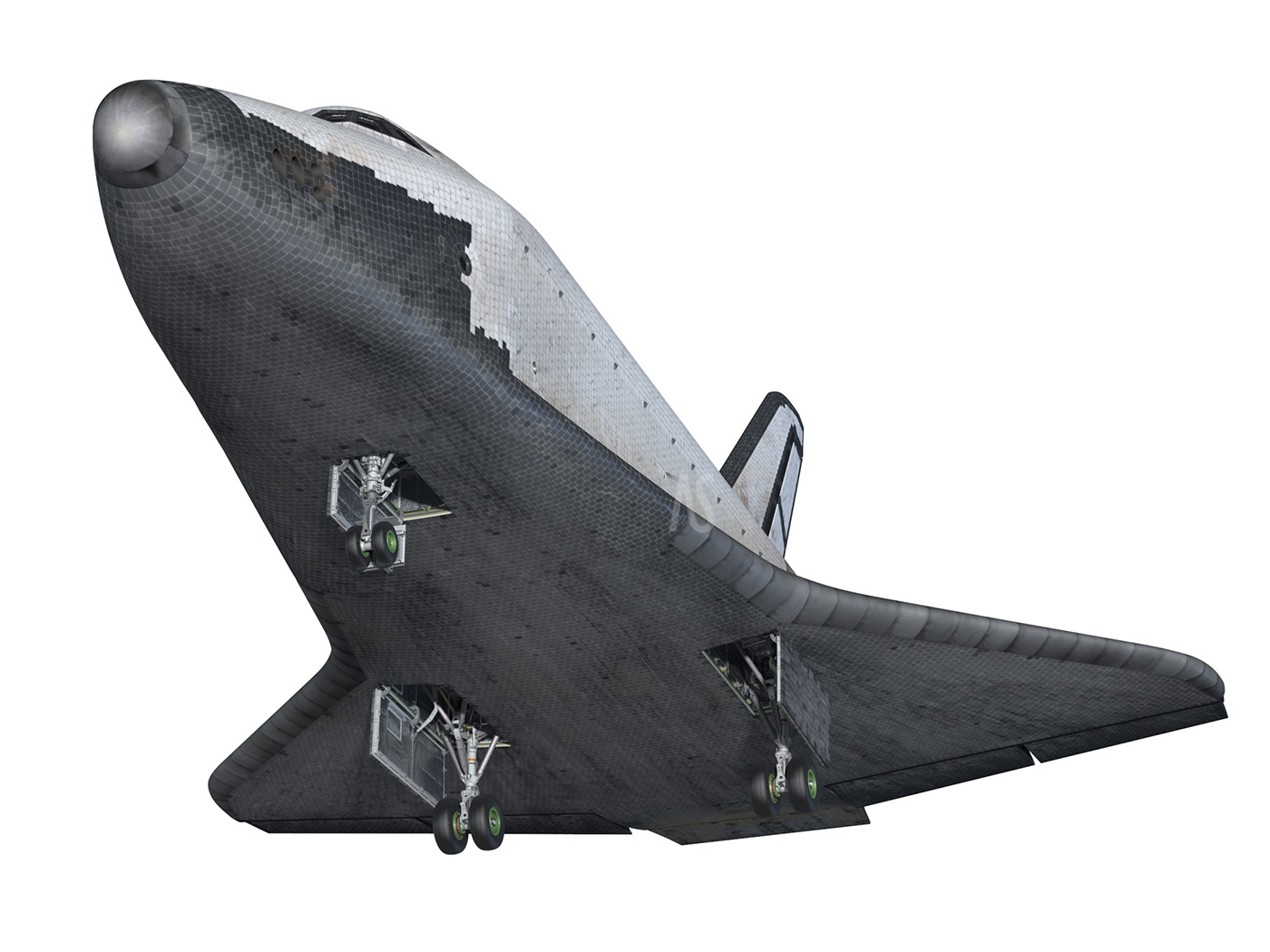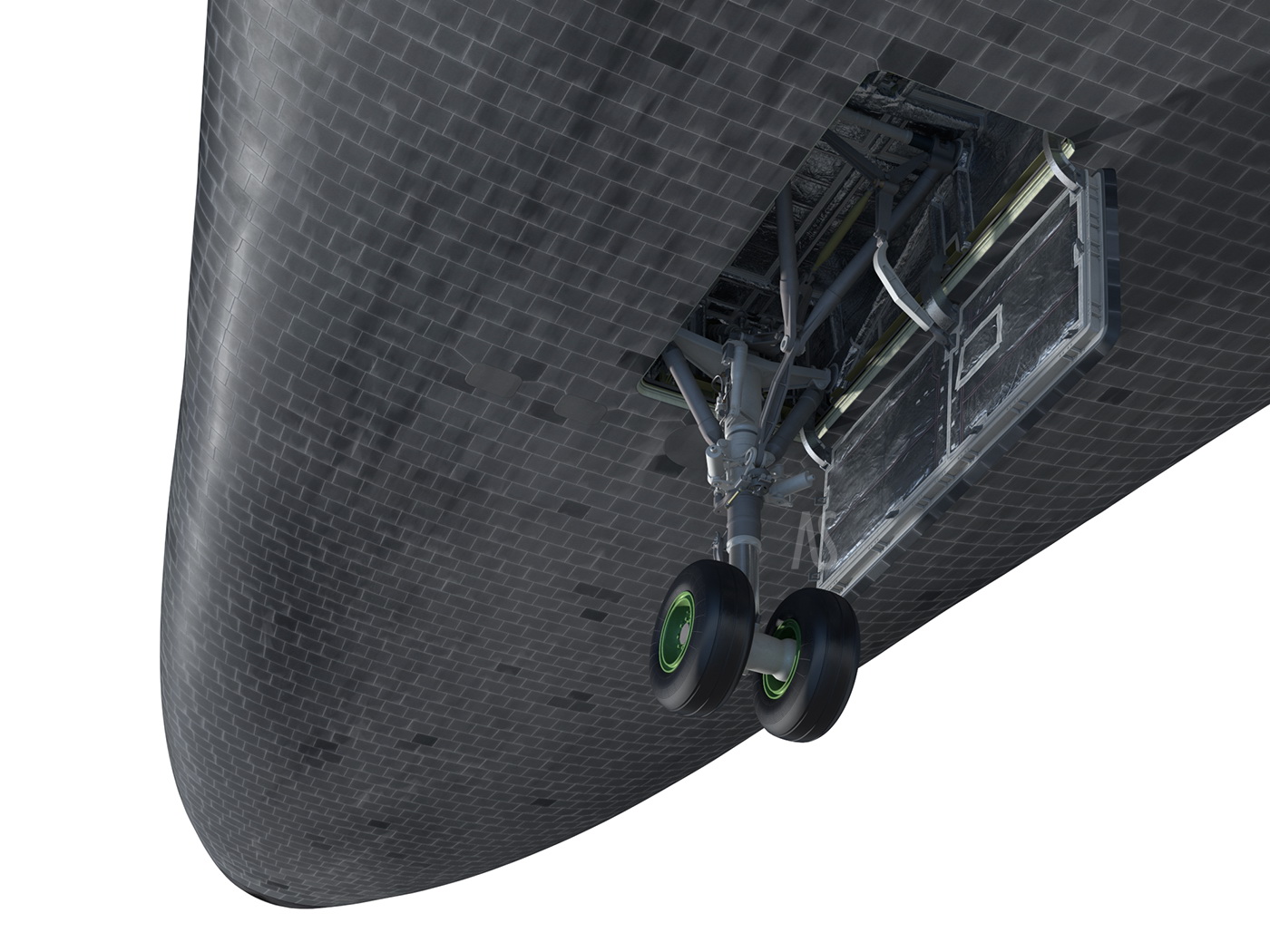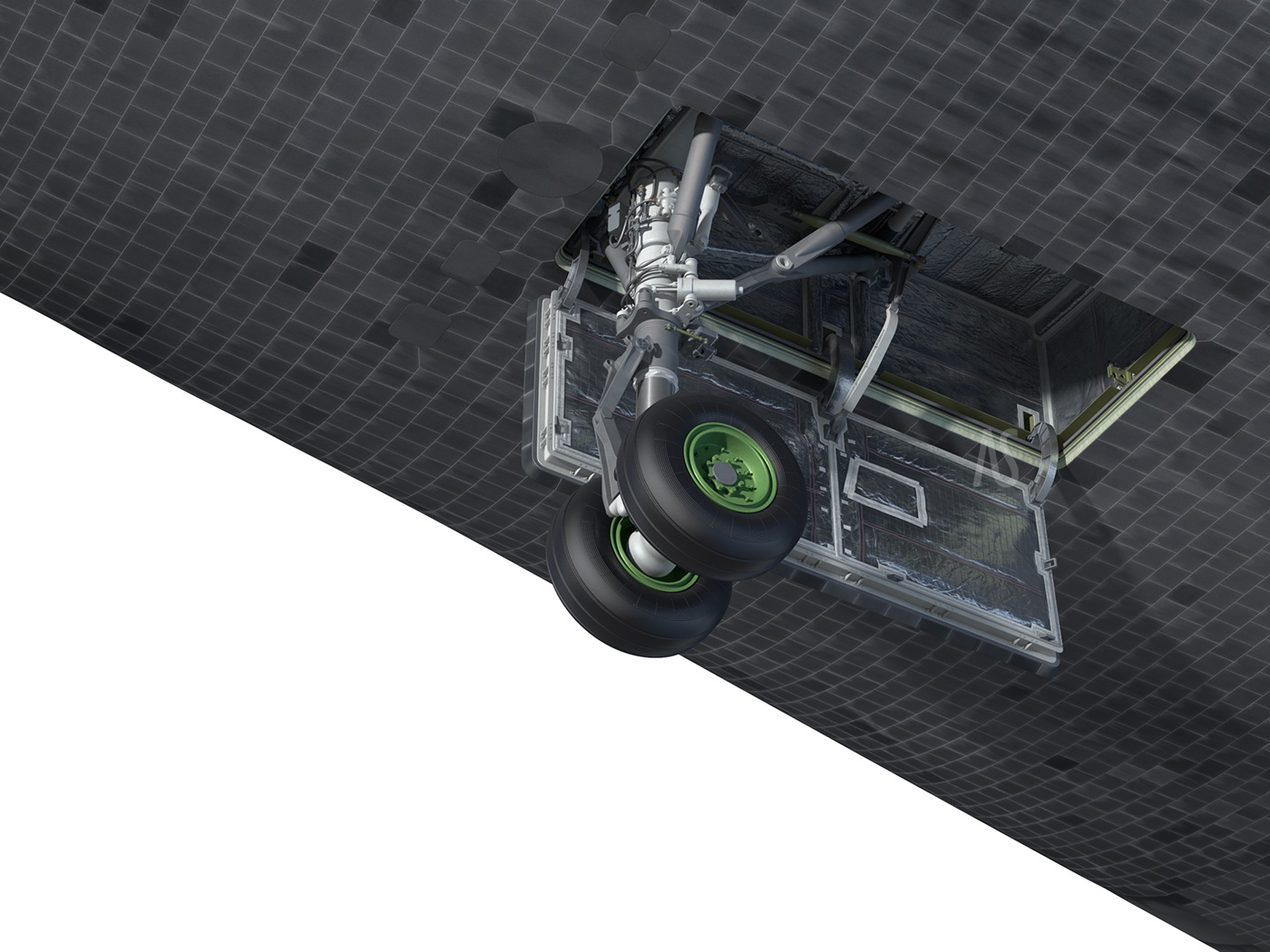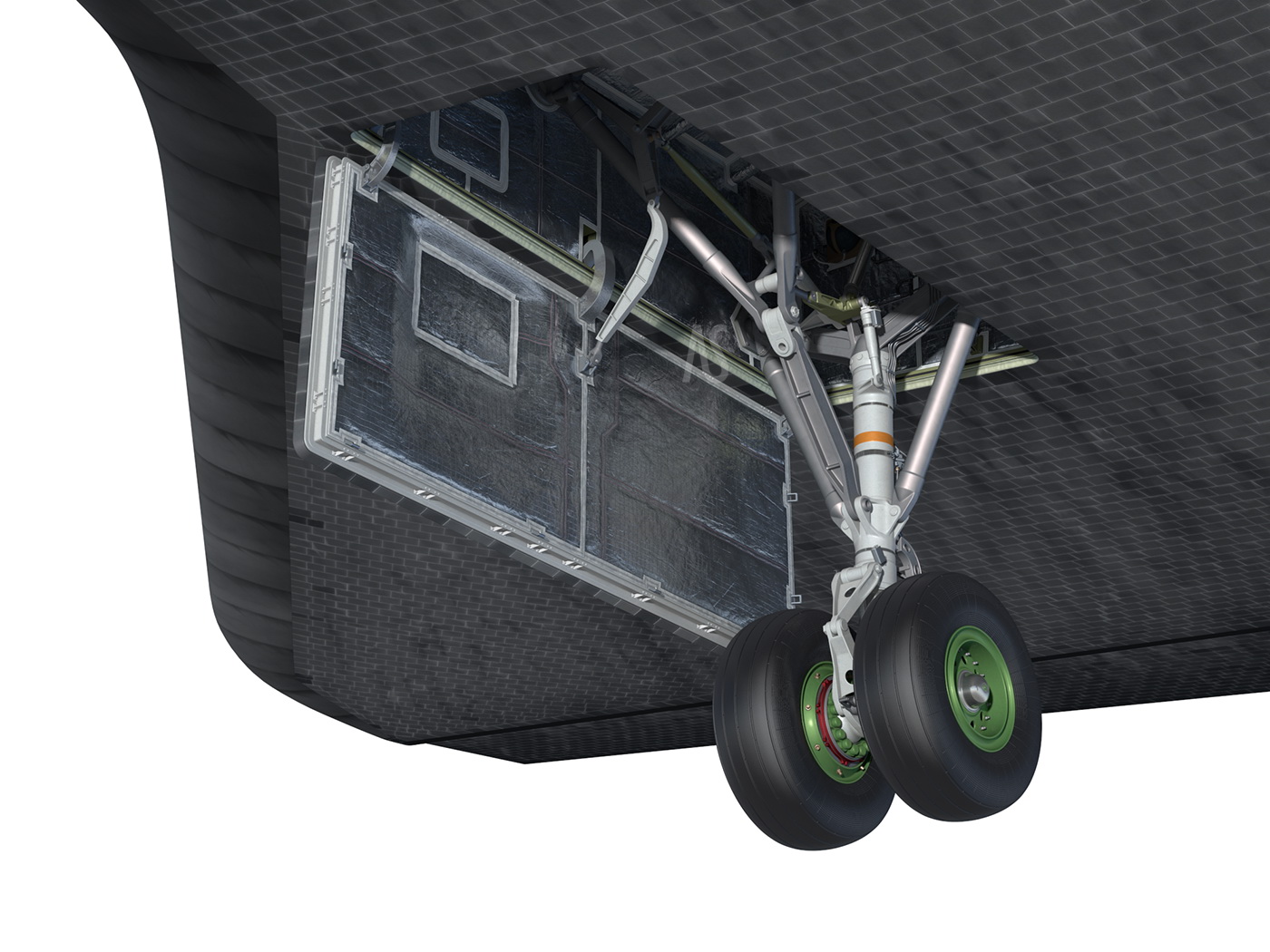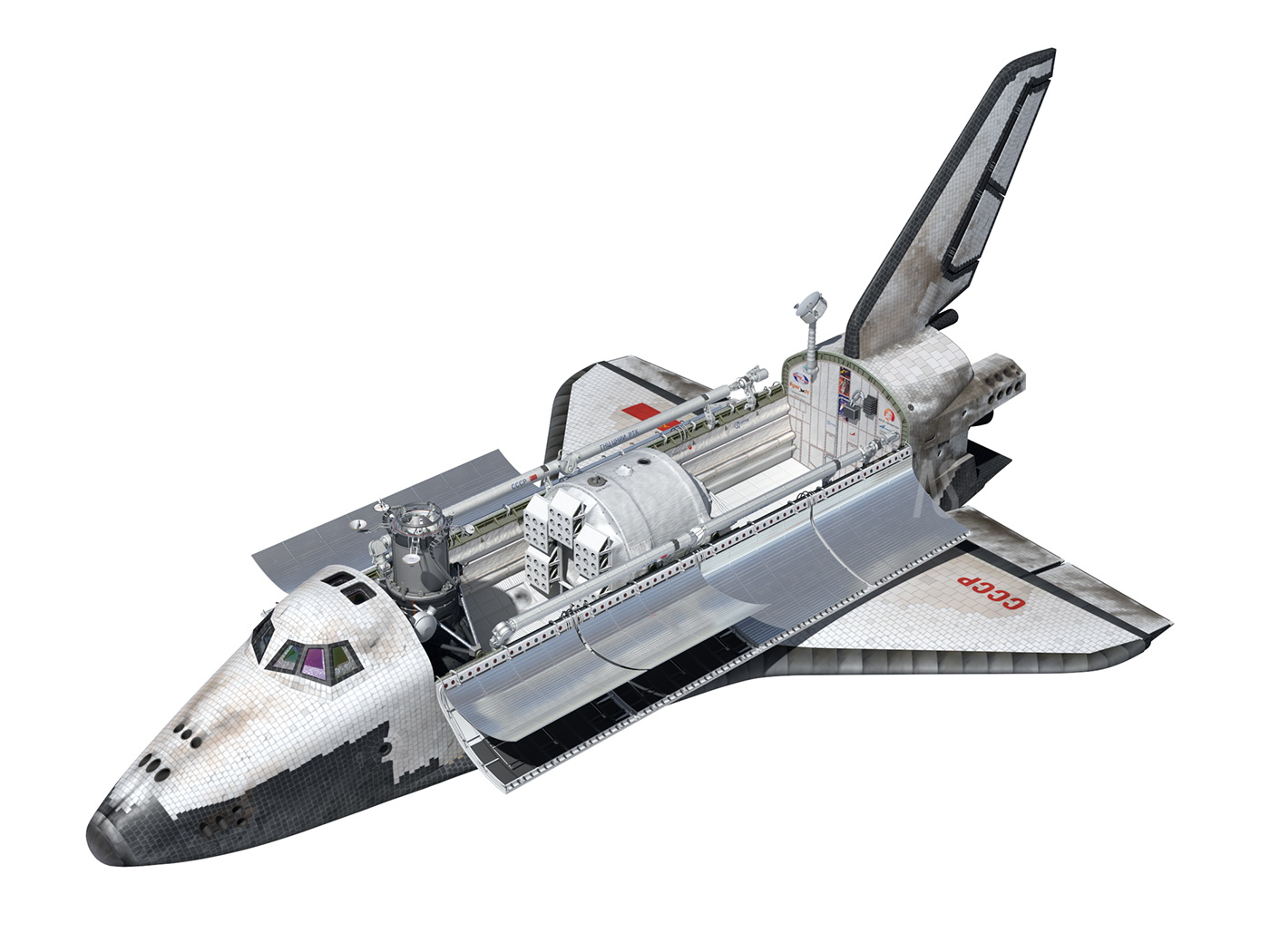
Client
Buran.ru
Topic
A detailed 3D model of the Soviet space shuttle Buran, equipped with several modules. Created for the Buran.ru website by space historian Vadim Lukashevich.
Description
The Buran space shuttle was the Soviet answer to the American Space Shuttle and the largest space program in the Soviet Union. Although Buran was partially superior to the Space Shuttle, its development was discontinued after only one space flight. The only remains of the Buran program are several incomplete models, prototypes, and fragments of individual components.
For the project, the client provided me with numerous images, original construction plans and technical explanations. In addition, I researched supplementary image material. On this basis, I reconstructed a detailed 3D model of the Buran space shuttle. The model was developed in several stages and represents a completed and fully equipped variant of Buran. The model is described in more detail below.
Overview
The outside of Buran is relatively well documented, and I could rely on original plans and photos. Reference material on the design of the interior (like the payload bay and the modules) was limited. To create a convincing model, I put a lot of effort into the design of this areas.
Close-ups
I have built the model as detailed as I could. My goal was to create a model, that works in long shots and extreme close-ups.
Modules
In addition to the spacecraft, I also build two modules that were designed for Buran. The grey module is the docking module. The lower spherical part is connected to the main cabin and contains an airlock. The upper cylindrical part contains an extendable tunnel and is equipped with an APAS docking system at the top.
The cylindrical module, located in the middle of the cargo hold was a prototype for future modules. The module was also equipped with scientific instruments for the test flights of Buran.
Landing Gear
Another important part of the model is the landing gear. The construction of the gear was quite difficult because I had no information on the exact dimensions of its components. I had to find the correct proportions visually, with photos as reference.

